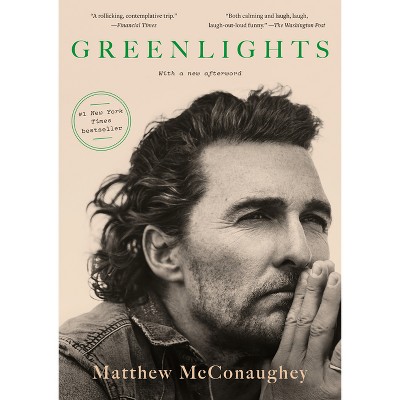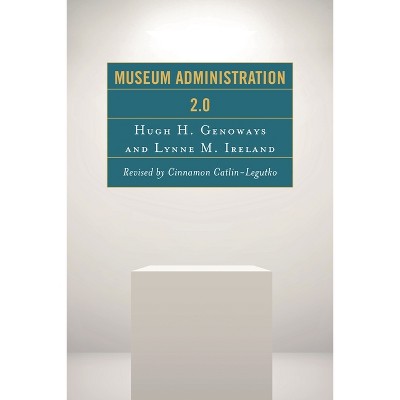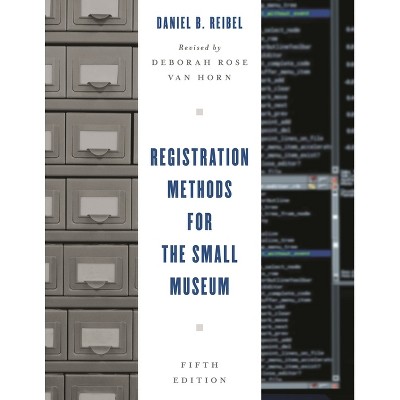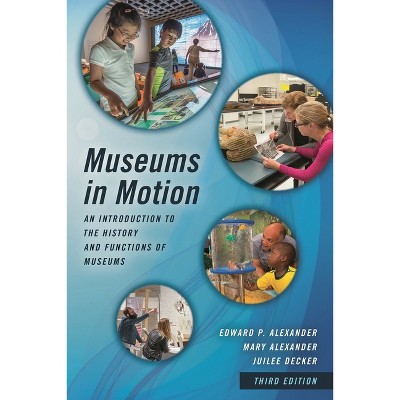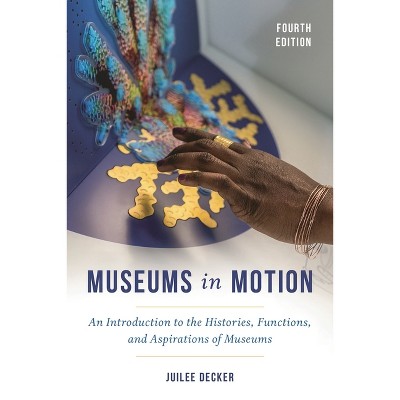An Accessible Past - (American Association for State and Local History) by Heather Pressman (Paperback)

About this item
Highlights
- An Accessible Past helps historic sites overcome barriers to accessibility by clarifying what historic sites must do in order to be legally compliant; in addition, this edited volume provides case studies of creative ways visitors can engage with the museum while retaining the historic integrity of the places and spaces in question.
- About the Author: Heather Pressman is an educator with a passion for accessibility and inclusion.
- 240 Pages
- Business + Money Management, Museum Administration & Museology
- Series Name: American Association for State and Local History
Description
About the Book
An Accessible Past: Making Historic Sites Accessible to All helps historic sites and house museums understand what they need to do in order to be legally compliant, and then, going beyond legal compliance, find creative ways in which to make their sites and museums accessible ...Book Synopsis
An Accessible Past helps historic sites overcome barriers to accessibility by clarifying what historic sites must do in order to be legally compliant; in addition, this edited volume provides case studies of creative ways visitors can engage with the museum while retaining the historic integrity of the places and spaces in question. This book will help readers think outside the box when it comes to accessibility at historic sites, regardless of their size or budget.
This book is for practitioners and students in the fields of public history and museum studies. Offers practical and low-cost ideas for increasing accessibility at historic sites, while retaining the historic integrity of the places and spaces in question.Provides an overview of legal obligations and ideas for making historic sites accessible.Demonstrates how, by being more accessible, historic sites and museums will be able to invite new audiences to their locations, strengthening the sustainability of these organizations and promoting the relevancy of history to more visitors than in the past.Review Quotes
"Accessibility and inclusion have long been issues in museums, particularly historical sites, which often face unique challenges. An Accessible Past offers indispensable information for how organizations can meet legal compliance with the American Disabilities Act (ADA) and provide enriching, equitable experiences for people with different abilities and backgrounds. Part 1 addresses what access is and why it is important, and gives a brief history of disability laws, especially he implications of ADA for historical sites. It closes with steps for making historical sites more accessible. Part 2 examines 12novel case studies across a spectrum of museum sites--from an 18th-century house to senior living facilities--to illuminate museum sites' unique challenges. Each case study illustrates how creative programming and physical accessibility solution scan create greater access and inclusion and demonstrates the compatibility of accessibility and historical integrity. Part 3 and appendix A provide practical, concrete suggestions to practitioners of historical and heritage preservation for actively engaging and resolving any barriers that may limit accessibility and inclusion at institutions. The work is a must read for anyone considering how to increase accessibility at their institution. Highly recommended. Undergraduates through faculty and especially practitioners." --Choice Reviews
"Whereas some view preservation and accessibility as incompatible, Heather Pressman and her team of authors emphasize that it is only through access that preservation reaches its full potential. The case studies in An Accessible Past go far beyond installing ramps and other physical accommodation to consider access at its fullest. Their creative approaches will challenge and inspire those considering accessibility at their own sites." --Dr. Cynthia G. Falk, Cooperstown Graduate Program, SUNY Oneonta. "An Accessible Past: Making Historic Sites Accessible is an indispensable publication for anyone interesting in making their museum or site more welcoming and accessible. The book gives practical information on how sites can truly be more inclusive with examples of what they can do to improve parking, entrances, pathways, signage, exhibitions, websites, programs etc. The wide-ranging and creative case studies look at how a variety of museums ranging from historic houses to transportation museums and landscapes are making real progress with accessibility. The comprehensive list of resources and the bibliography will be of great help to anyone looking to improve their historic site." --Kenneth C. Turino, Manager of Community Partnerships and Resource Development, Historic New England "Unlock the potential of historic sites and house museums with An Accessible Past. This enlightening guide underscores the importance of preservation and education, demonstrating how they can harmoniously coexist. Through its clear, step-by-step process, your organization can discover its unique path towards accessibility. Compelling case studies ranging from an 18th-century historic house to a 20th-century aircraft carrier prove that with the right approach, anything is indeed possible." --Max A. van Balgooy, President, Engaging Places, LLC and Assistant Professor, Museum Studies Program, George Washington UniversityAn Accessible Past: Making Historic Sites Accessible is an indispensable publication for anyone interesting in making their museum or site more welcoming and accessible. The book gives practical information on how sites can truly be more inclusive with examples of what they can do to improve parking, entrances, pathways, signage, exhibitions, websites, programs etc. The wide-ranging and creative case studies look at how a variety of museums ranging from historic houses to transportation museums and landscapes are making real progress with accessibility. The comprehensive list of resources and the bibliography will be of great help to anyone looking to improve their historic site.
Accessibility and inclusion have long been issues in museums, particularly historical sites, which often face unique challenges. An Accessible Past offers indispensable information for how organizations can meet legal compliance with the American Disabilities Act (ADA) and provide enriching, equitable experiences for people with different abilities and backgrounds. Part 1 addresses what access is and why it is important, and gives a brief history of disability laws, especially he implications of ADA for historical sites. It closes with steps for making historical sites more accessible. Part 2 examines 12novel case studies across a spectrum of museum sites--from an 18th-century house to senior living facilities--to illuminate museum sites' unique challenges. Each case study illustrates how creative programming and physical accessibility solution scan create greater access and inclusion and demonstrates the compatibility of accessibility and historical integrity. Part 3 and appendix A provide practical, concrete suggestions to practitioners of historical and heritage preservation for actively engaging and resolving any barriers that may limit accessibility and inclusion at institutions. The work is a must read for anyone considering how to increase accessibility at their institution. Highly recommended. Undergraduates through faculty and especially practitioners.
Unlock the potential of historic sites and house museums with An Accessible Past. This enlightening guide underscores the importance of preservation and education, demonstrating how they can harmoniously coexist. Through its clear, step-by-step process, your organization can discover its unique path towards accessibility. Compelling case studies ranging from an 18th-century historic house to a 20th-century aircraft carrier prove that with the right approach, anything is indeed possible.
Whereas some view preservation and accessibility as incompatible, Heather Pressman and her team of authors emphasize that it is only through access that preservation reaches its full potential. The case studies in An Accessible Past go far beyond installing ramps and other physical accommodation to consider access at its fullest. Their creative approaches will challenge and inspire those considering accessibility at their own sites.
About the Author
Heather Pressman is an educator with a passion for accessibility and inclusion. Her background includes work in education, development, and communications. She currently serves as the Director of Learning & Engagement for the Molly Brown House Museum, one of the leading historic houses in terms of accessible programming.
Ms. Pressman has previously presented on museum accessibility at regional and national museum conferences, including AAM. She currently serves as a member of the organizing committee for the Art of Access Alliance in Denver, a consortium working to make Denver's arts and cultural attractions accessible to all. In this role, she helps plan and organize workshops and symposia for staff and volunteers of Denver area cultural organizations. Prior to moving to Denver, Ms. Pressman was selected as a member of the Accessibility Learning Collaborative, established by the California Networks for Collaboration, a statewide project launched by the California Association of Museums. She holds a Master's degree in Museum Studies from The Johns Hopkins University. There, her studies focused on education, accessibility, and developing online communities. She recently co-authored The Art of Access: A Practical Guide for Museum Accessibility (2021), published by Rowman & Littlefield.




